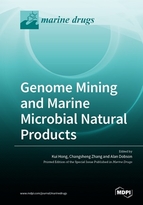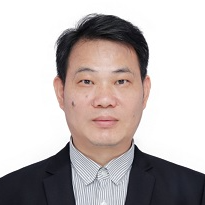Genome Mining and Marine Microbial Natural Products
A special issue of Marine Drugs (ISSN 1660-3397).
Deadline for manuscript submissions: closed (30 September 2019) | Viewed by 62229
Special Issue Editors
Interests: microbial systematic guided marine microbial drug resources (culture, compounds and genes): ecology, collection, isolation and identification; genomics guided marine microbial natural products discovery and biosynthesis
Interests: marine actinobacteria; marine natural products; antimicrobial activity; antitumor activity; marine drug development; biosynthesis of marine polycyclic compounds; genome mining of marine actinomycetes
Special Issue Information
Dear Colleagues,
Most of the bioactive secondary metabolites for drug discovery isolated from marine microorganisms have been discovered to date using classical bioassay-guided regimes. This process is currently undergoing significant changes primarily as a result of rapid developments in sequencing technology, synthetic biology and bioinformatics. As increasing numbers of whole-genome sequences become available for marine microorganisms, genome mining has become a very attractive tool for drug discovery. Bioinformatic-based approaches are typically employed to screen, and subsequently identify, novel gene clusters, many of which are responsible for the production of the novel molecules. Many genomes appear however to possess “silent” or cryptic biosynthetic gene clusters, the products of which appear to be regulated by a variety of environmental factors, and therefore remain largely undetected.
In this Special Issue, we focus on the rich genomic resources present within the genomes of marine microorganisms and the use of recently developed tools and technologies to exploit this genetic richness, to facilitate the discovery or find new bioactive molecules with potential biopharmaceutical applications.
For this Special Issue of Marine Drugs, we urge you to consider publishing your review paper or original research in the areas listed below:
- Bioinformatic tools and their application in genome mining for secondary metabolites
- Genome mining approaches for the identification of novel secondary metabolites
- Merging ecology (physical, chemical factors or co-culture) with microbial genome mining for secondary metabolites’ discovery
- Heterologous systems for the expression of gene clusters to identify novel metabolites
- Unlocking cryptic pathways, employing genomic based approaches
- Cutting-edge technology in genome editing and novel metabolites identification
Prof. Dr. Kui Hong
Prof. Dr. Changsheng Zhang
Prof. Dr. Alan Dobson
Guest Editors
Manuscript Submission Information
Manuscripts should be submitted online at www.mdpi.com by registering and logging in to this website. Once you are registered, click here to go to the submission form. Manuscripts can be submitted until the deadline. All submissions that pass pre-check are peer-reviewed. Accepted papers will be published continuously in the journal (as soon as accepted) and will be listed together on the special issue website. Research articles, review articles as well as short communications are invited. For planned papers, a title and short abstract (about 100 words) can be sent to the Editorial Office for announcement on this website.
Submitted manuscripts should not have been published previously, nor be under consideration for publication elsewhere (except conference proceedings papers). All manuscripts are thoroughly refereed through a single-blind peer-review process. A guide for authors and other relevant information for submission of manuscripts is available on the Instructions for Authors page. Marine Drugs is an international peer-reviewed open access monthly journal published by MDPI.
Please visit the Instructions for Authors page before submitting a manuscript. The Article Processing Charge (APC) for publication in this open access journal is 2900 CHF (Swiss Francs). Submitted papers should be well formatted and use good English. Authors may use MDPI's English editing service prior to publication or during author revisions.
Keywords
- Genome mining
- Secondary metabolites
- Natural products
- Cryptic gene clusters
- Genome editing
- Heterologous expression
- Cryptic gene activation
Related Special Issue
- Natural Product Genomics and Metabolomics of Marine Bacteria in Marine Drugs (12 articles)









